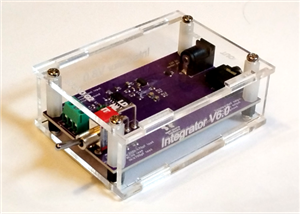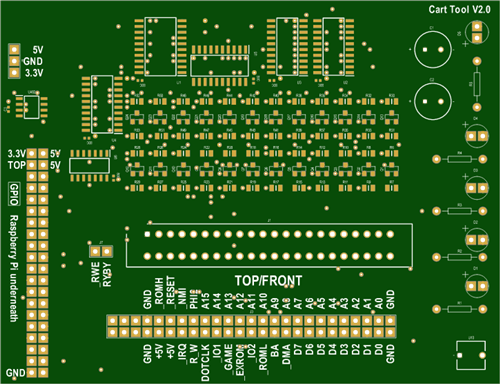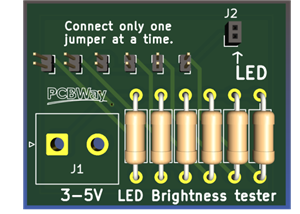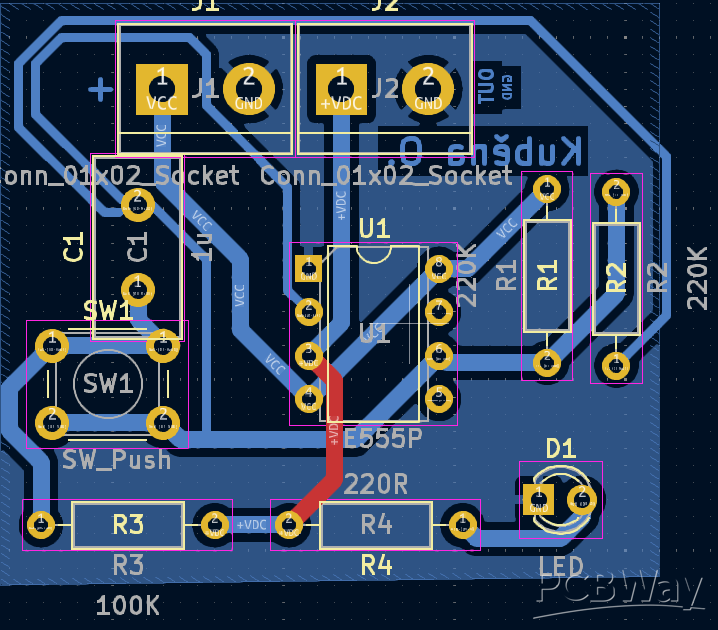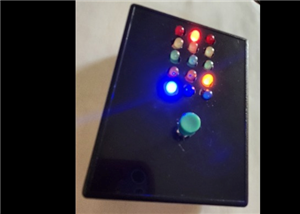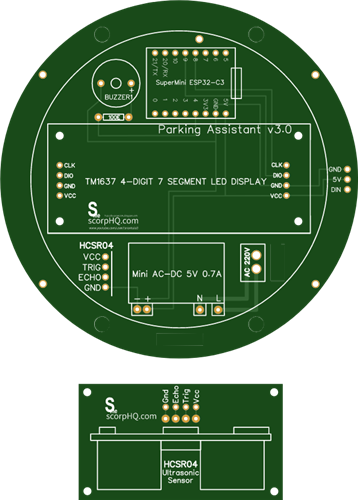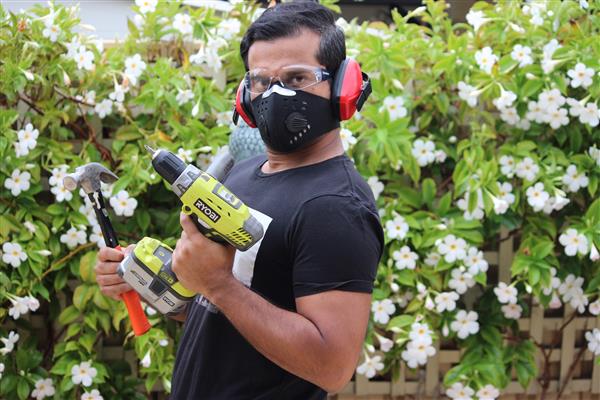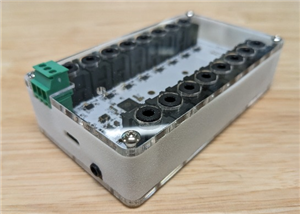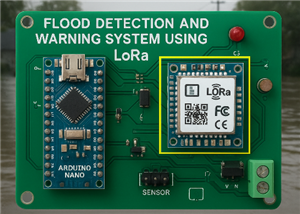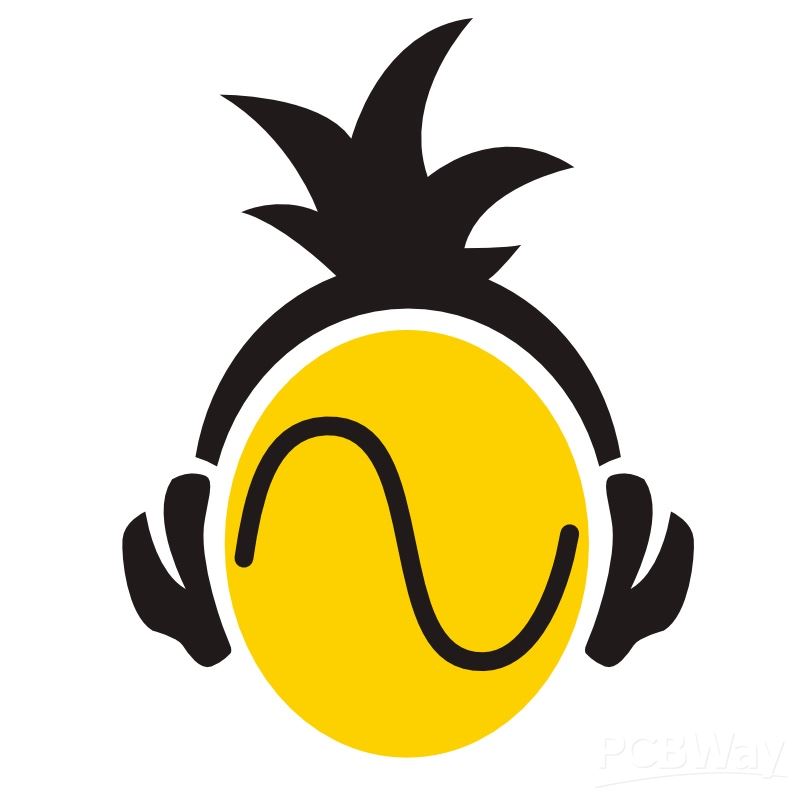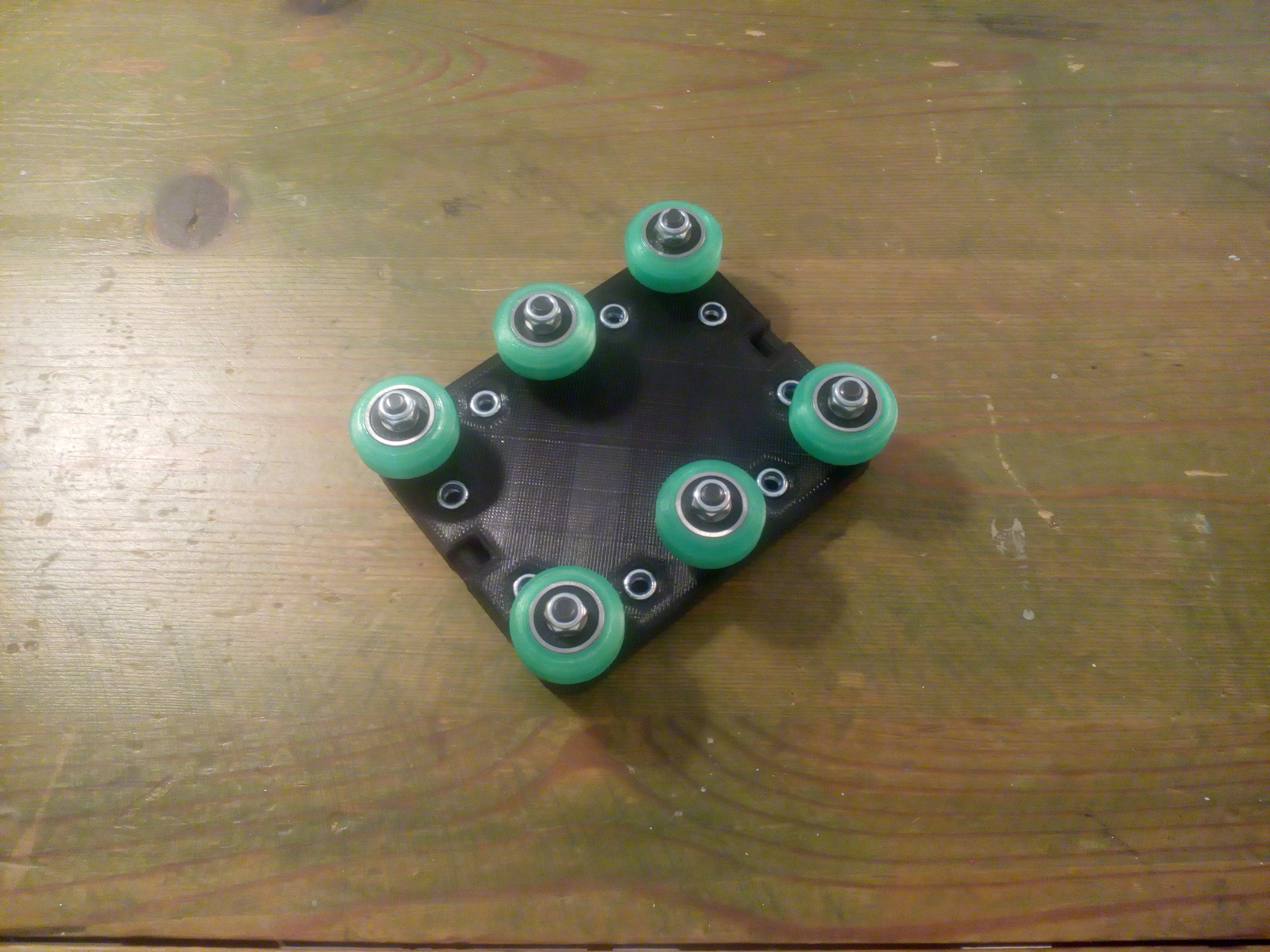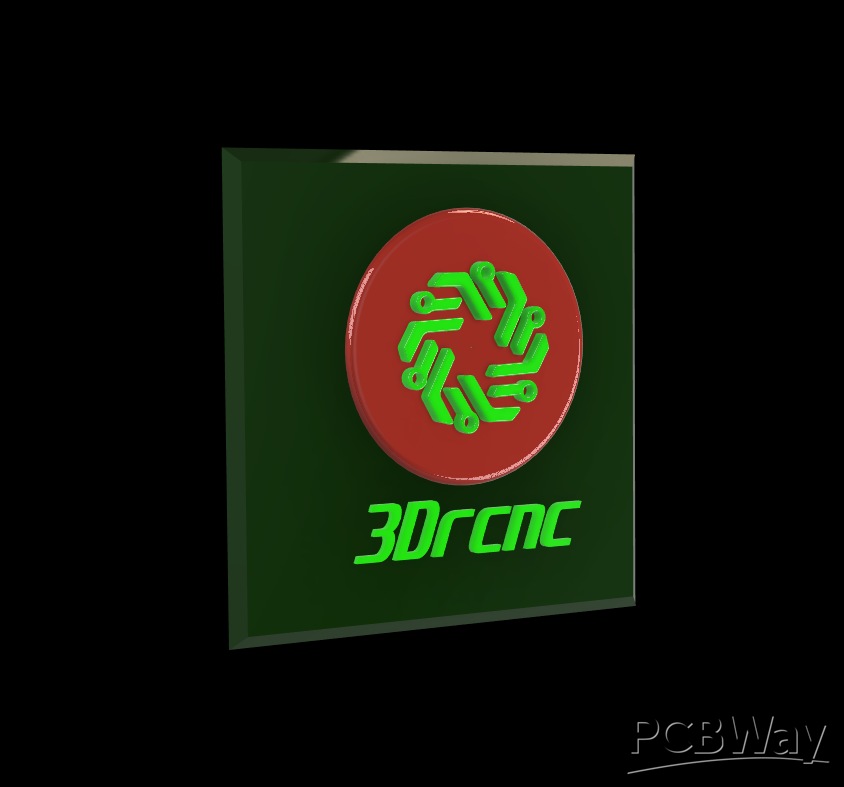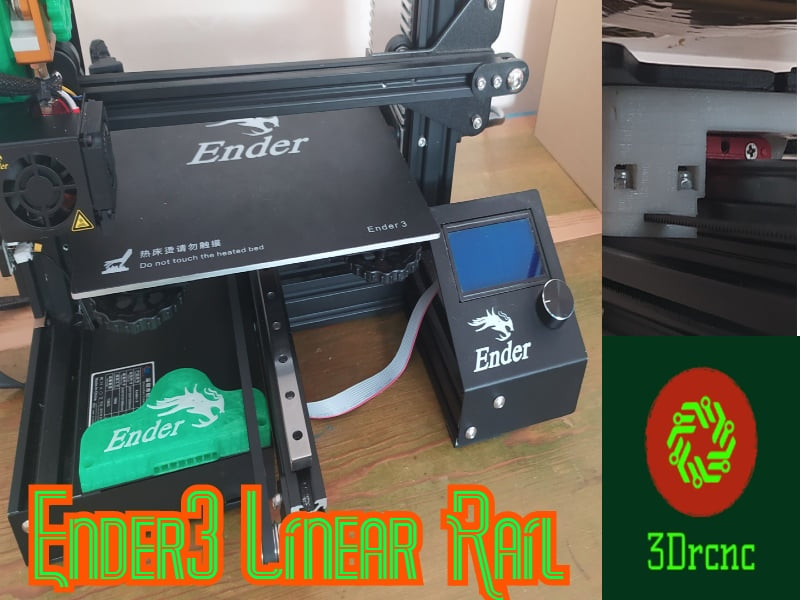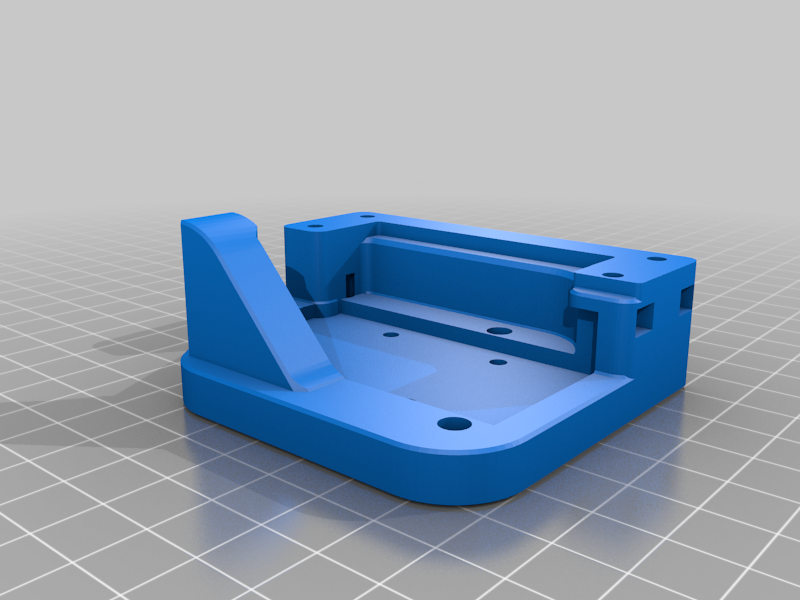
|
arduino IDEArduino
|
Third eye for the blind
- The first wearable technology for people who are blind
- Using ultrasonic waves to detect the obstacles
- Notifying the user through vibrations/buzzer sound
'Third eye for the blind' is an innovation that helps blind people to navigate with speed and confidence by detecting the nearby obstacles using the help of ultrasonic waves and notifying them with buzzer sound or vibration. They only need to wear this device as a band or cloth.
According to WHO 39 million people are estimated as blind worldwide. They are suffering a lot of hardship in their daily life. The affected ones have been using the traditional white cane for many years which although being effective, still has a lot of disadvantages. Another way is, having a pet animal such as a dog, but it is really expensive. So the aim of the project is to develop a cheap and more efficient way to help the visually impaired navigate with greater comfort, speed and confidence.
Video
Watch the video of its working
Watch the video that came in a news channel (Malayalam language)
The novelty of the project: This is the first wearable technology for blind people which resolves all the problems of existing technologies. Nowadays there are so many instruments and smart devices for visually impaired people for navigation but most of them have certain problems for carrying and the major drawback is those need a lot of training to use. One of the main peculiarities of this innovation is, it is affordable for everyone, the total cost is less than $25 (~1500INR). There are no such devices available in the market that can be worn like cloth and have such a low cost and simplicity. When used on a large scale, with improvements in the prototype, it will drastically benefit the community.
Existing Systems

- White cane
- Pet dog
- Smart devices (eg: Vision a torch for blinds)
The problem of the Existing Systems:
- White cane - May easily crack/break, The stick may get stuck at pavement cracks of different objects.
- Pet dog - Huge cost. (~$42,000 / 280000Rs )
- Common Disadvantages (Including the smart devices) Cannot be carried easily, needs a lot of training to use
The features of Third eye for the blind: By wearing this device they can fully avoid the use of a white cane and such other devices. This device will help the blind to navigate without holding a stick which is a bit annoying for them. They can simply wear it as a band or cloth and it can function very accurately and they only need a very little training to use it.
Full Description of the Project

I have designed a special wearable device based on the Arduino board which can be worn like a cloth for blinds. This device is equipped with five ultrasonic sensors, consisting of five modules that are connected to the different parts of the body. Among them, two for both shoulders, another two for both knees and one for the hand. Using the five ultrasonic sensors, blind people can detect the objects in a five-dimensional view around them and can easily travel anywhere. When the ultrasonic sensor detects obstacles the device will notify the user through vibrations and sound beeps. The intensity of vibration and rate of beeping increases with a decrease in distance and this is a fully automated device.
Feature improvements:
The entire project can be made in the form of a jacket so that the device doesn't need to be worn one by one. The use of specially designed boards instead of Arduino and high-quality ultrasonic sensors make faster response which makes the device capable of working in crowded
Tested Successfully With the Help of a Visually Impaired Person.

Read more about this here in the FB post by our school science teacher.
Prototyping of the Idea - Parts Used



Materials
- 5 x Arduino pro mini
- 5 x Ultrasonic sensor
- 5 x Pref board
- 5 x Vibrating motor
- 5 x Buzzers
- 5 x Red LEDs
- 5 x Switches
- Male and female header pins
- 4 x Jumper cable
- One power bank
- One 3.3 volts old mobile battery
- Some elastics and stickers(to make it as a band for wearing)
Circuit Diagram and Wiring


Wiring instruction.
The ground of LED, buzzer and vibration motor to GND of Arduino
+ve of LED and middle leg of switch to Arduino pin 5
+ve of Buzzer to the first leg of the switch
+ve of Vibration motor to the third leg of the switch
Ultrasonic sensor
Ultrasonic sensor pin VCC - Arduino pin VCC
Ultrasonic sensor pin GND - Arduino pin GND
Ultrasonic sensor pin Trig - Arduino pin 12
Ultrasonic sensor pin Echo - Arduino PIN 10
The switch used here is for selecting the mode. ( buzzer or vibration mode.)
Figure 2 - Powering the modules - Connect the 4 Arduino pro mini to a USB male pin and connect to a power bank. For the module in the hand use a small lithium battery.
Making the Modules


- First, cut the perf board in 5 X 3 cm dimension and solder the female headers for the Arduino to the board.
- Then solder the buzzer.
- Then connect the vibrating motor using the glue gun and solder wires to it.
- Then connect the LED.
- Then connect the switch.
- Then connect header pins for ultrasonic sensors and for battery input.
- Then solder everything as shown in the circuit diagram.
- Now connect the Arduino and ultrasonic sensor to the board
Also, connect the elastic band to all the modules.
3 more modules are to be made in the same way as described above, but for the one in the hand, there is a little difference. visit the next step before making that last module.
Code + Making the Module for the Hand

- Connect the ultrasonic sensor to the board by using 4 jumper cables.
- Then connect a 3.7-volt mobile battery to this module.
- Then connect the elastic band as shown in the figure.
At last upload the code to each Arduino board and power the 4 other modules using a power bank.
Optional upgrade


I have upgraded the hand modules as shown here and also connected the shoulder modules to a jacket for more comfortable wear.
//VISIT : www.robotechmaker.com const int pingTrigPin = 12; const int pingEchoPin = 10; int buz=5; void setup() { Serial.begin(9600); pinMode(buz, OUTPUT); } void loop() { long duration, cm; pinMode(pingTrigPin, OUTPUT); digitalWrite(pingTrigPin, LOW); delayMicroseconds(2); digitalWrite(pingTrigPin, HIGH); delayMicroseconds(5); digitalWrite(pingTrigPin, LOW); pinMode(pingEchoPin, INPUT); duration = pulseIn(pingEchoPin, HIGH); cm = microsecondsToCentimeters(duration); if(cm<=50 && cm>0) { int d= map(cm, 1, 100, 20, 2000); digitalWrite(buz, HIGH); delay(100); digitalWrite(buz, LOW); delay(d); } Serial.print(cm); Serial.print("cm"); Serial.println(); delay(100); } long microsecondsToCentimeters(long microseconds) { return microseconds / 29 / 2; }

Third eye for the blind
- Comments(0)
- Likes(2)
 Log in to post comments.
Log in to post comments.
-
 (DIY) C64iSTANBUL
Apr 13,2022
(DIY) C64iSTANBUL
Apr 13,2022
-
 mohdazhar
Mar 24,2022
mohdazhar
Mar 24,2022
- 0 USER VOTES
- YOUR VOTE 0.00 0.00
- 1
- 2
- 3
- 4
- 5
- 6
- 7
- 8
- 9
- 10
- 1
- 2
- 3
- 4
- 5
- 6
- 7
- 8
- 9
- 10
- 1
- 2
- 3
- 4
- 5
- 6
- 7
- 8
- 9
- 10
- 1
- 2
- 3
- 4
- 5
- 6
- 7
- 8
- 9
- 10
 More by mohdazhar
More by mohdazhar
-
 "A perfectly working line follower robot using arduino"
LINE FOLLOWER ROBOT - THE EASIEST!This is a simple tutorial to make a line follower robot using Ardu...
"A perfectly working line follower robot using arduino"
LINE FOLLOWER ROBOT - THE EASIEST!This is a simple tutorial to make a line follower robot using Ardu...
-
 IOT PLANT - GROW YOUR PLANTS FROM ANYWHERE AROUND THE WORLD.
Watch the video The device and plant setupWhat about growing any plants from anywhere around the wor...
IOT PLANT - GROW YOUR PLANTS FROM ANYWHERE AROUND THE WORLD.
Watch the video The device and plant setupWhat about growing any plants from anywhere around the wor...
-
 HOW TO PROGRAM ESP8266 - 01
In this tutorial, I am going to show how to program ESP8266 - 01 using an Arduino board or using FTD...
HOW TO PROGRAM ESP8266 - 01
In this tutorial, I am going to show how to program ESP8266 - 01 using an Arduino board or using FTD...
-
 Make Your First Arduino Robot - the Best Tutorial Out There
Smartphone-controlled obstacle avoiding and wall follower robot.Are you a beginner in Arduino and ha...
Make Your First Arduino Robot - the Best Tutorial Out There
Smartphone-controlled obstacle avoiding and wall follower robot.Are you a beginner in Arduino and ha...
-
 THE ULTIMATE OFFROAD RC ROVER
Let's make an all-terrain remote-controlled rover bot. This is a great starter project for hobbyists...
THE ULTIMATE OFFROAD RC ROVER
Let's make an all-terrain remote-controlled rover bot. This is a great starter project for hobbyists...
-
 MAKE A 3.3 VOLT REGULATOR FOR ESP8266
The 3.3-volt power supply is one of the main issues when we use ESP8266 - 01 as a standalone board. ...
MAKE A 3.3 VOLT REGULATOR FOR ESP8266
The 3.3-volt power supply is one of the main issues when we use ESP8266 - 01 as a standalone board. ...
-
 Automatic Bus Stop Announcement System
When we travel by bus ,the route of the bus is unknown to a new passenger. It mostly affects the ill...
Automatic Bus Stop Announcement System
When we travel by bus ,the route of the bus is unknown to a new passenger. It mostly affects the ill...
-
 Earthquake Alert System Based On IOT
Many countries have implemented EEW(early earthquake warning) systems to save human lives. The earth...
Earthquake Alert System Based On IOT
Many countries have implemented EEW(early earthquake warning) systems to save human lives. The earth...
-
 Smart Street Light
Smart Street Light spotlights different restrictions and difficulties identified with traditional an...
Smart Street Light
Smart Street Light spotlights different restrictions and difficulties identified with traditional an...
-
 Line Break Detector With Alert System
Line Break Detector With Alert System is a mechanism which helps the consumer and KSEB officers to d...
Line Break Detector With Alert System
Line Break Detector With Alert System is a mechanism which helps the consumer and KSEB officers to d...
-
 Smart Railway Gate Opening System Using IOT
The railway crossing accidents are increasing day by day due to human-manned railway crossings. Live...
Smart Railway Gate Opening System Using IOT
The railway crossing accidents are increasing day by day due to human-manned railway crossings. Live...
-
 Advanced Biometric Finger Print Scanner
We took the case of our hostel mess and concluded that there is no proper way to manage the hostel m...
Advanced Biometric Finger Print Scanner
We took the case of our hostel mess and concluded that there is no proper way to manage the hostel m...
-
 Baby Monitoring System
We are very well familiar with the hurdles faced by Parents to nurture their infant and especially i...
Baby Monitoring System
We are very well familiar with the hurdles faced by Parents to nurture their infant and especially i...
-
 TOKEN MACHINE AND QUEUE MANAGEMENT SYSTEM FOR HOSPITALS
ABSTRACTPatient wait times have a strong influence on patient satisfaction levels. A common scenario...
TOKEN MACHINE AND QUEUE MANAGEMENT SYSTEM FOR HOSPITALS
ABSTRACTPatient wait times have a strong influence on patient satisfaction levels. A common scenario...
-
 Make your own branded ESP32 development board with PCBWay!
What about making your own custom PCB boards with your own branding? Doesn't that sound nice? PCB ma...
Make your own branded ESP32 development board with PCBWay!
What about making your own custom PCB boards with your own branding? Doesn't that sound nice? PCB ma...
-
 FOODIE BOT
Automation has become an integral part of today's modern life. We are increasingly noticing that mor...
FOODIE BOT
Automation has become an integral part of today's modern life. We are increasingly noticing that mor...
-
 A ESP32 BASED BLUETOOTH MINI ROBOT
A simple mini robot that you can control with your phone. The robot can be improvised and implemente...
A ESP32 BASED BLUETOOTH MINI ROBOT
A simple mini robot that you can control with your phone. The robot can be improvised and implemente...
-
 IOT smart AC plug
A smart plug is a home automation device and is a hot new thing. Several types of smart plugs are av...
IOT smart AC plug
A smart plug is a home automation device and is a hot new thing. Several types of smart plugs are av...
-
 "A perfectly working line follower robot using arduino"
LINE FOLLOWER ROBOT - THE EASIEST!This is a simple tutorial to make a line follower robot using Ardu...
"A perfectly working line follower robot using arduino"
LINE FOLLOWER ROBOT - THE EASIEST!This is a simple tutorial to make a line follower robot using Ardu...
-
 IOT PLANT - GROW YOUR PLANTS FROM ANYWHERE AROUND THE WORLD.
Watch the video The device and plant setupWhat about growing any plants from anywhere around the wor...
IOT PLANT - GROW YOUR PLANTS FROM ANYWHERE AROUND THE WORLD.
Watch the video The device and plant setupWhat about growing any plants from anywhere around the wor...
-
 HOW TO PROGRAM ESP8266 - 01
In this tutorial, I am going to show how to program ESP8266 - 01 using an Arduino board or using FTD...
HOW TO PROGRAM ESP8266 - 01
In this tutorial, I am going to show how to program ESP8266 - 01 using an Arduino board or using FTD...
-
 Make Your First Arduino Robot - the Best Tutorial Out There
Smartphone-controlled obstacle avoiding and wall follower robot.Are you a beginner in Arduino and ha...
Make Your First Arduino Robot - the Best Tutorial Out There
Smartphone-controlled obstacle avoiding and wall follower robot.Are you a beginner in Arduino and ha...
-
 THE ULTIMATE OFFROAD RC ROVER
Let's make an all-terrain remote-controlled rover bot. This is a great starter project for hobbyists...
THE ULTIMATE OFFROAD RC ROVER
Let's make an all-terrain remote-controlled rover bot. This is a great starter project for hobbyists...
-
 MAKE A 3.3 VOLT REGULATOR FOR ESP8266
The 3.3-volt power supply is one of the main issues when we use ESP8266 - 01 as a standalone board. ...
MAKE A 3.3 VOLT REGULATOR FOR ESP8266
The 3.3-volt power supply is one of the main issues when we use ESP8266 - 01 as a standalone board. ...
-
 Automatic Bus Stop Announcement System
When we travel by bus ,the route of the bus is unknown to a new passenger. It mostly affects the ill...
Automatic Bus Stop Announcement System
When we travel by bus ,the route of the bus is unknown to a new passenger. It mostly affects the ill...
-
 Earthquake Alert System Based On IOT
Many countries have implemented EEW(early earthquake warning) systems to save human lives. The earth...
Earthquake Alert System Based On IOT
Many countries have implemented EEW(early earthquake warning) systems to save human lives. The earth...
-
 Smart Street Light
Smart Street Light spotlights different restrictions and difficulties identified with traditional an...
Smart Street Light
Smart Street Light spotlights different restrictions and difficulties identified with traditional an...
-
 Line Break Detector With Alert System
Line Break Detector With Alert System is a mechanism which helps the consumer and KSEB officers to d...
Line Break Detector With Alert System
Line Break Detector With Alert System is a mechanism which helps the consumer and KSEB officers to d...
-
 Smart Railway Gate Opening System Using IOT
The railway crossing accidents are increasing day by day due to human-manned railway crossings. Live...
Smart Railway Gate Opening System Using IOT
The railway crossing accidents are increasing day by day due to human-manned railway crossings. Live...
-
 Advanced Biometric Finger Print Scanner
We took the case of our hostel mess and concluded that there is no proper way to manage the hostel m...
Advanced Biometric Finger Print Scanner
We took the case of our hostel mess and concluded that there is no proper way to manage the hostel m...
-
-
Choose the right brightness for your LEDs. LED RESISTANCE HELPER Tool
193 0 3 -
-
Flood Detection and warning system using LORA and Arduino
516 0 2 -
-
Ender 3 Linear Rail Upgrade (No modifying of existing parts)
453 0 0



































